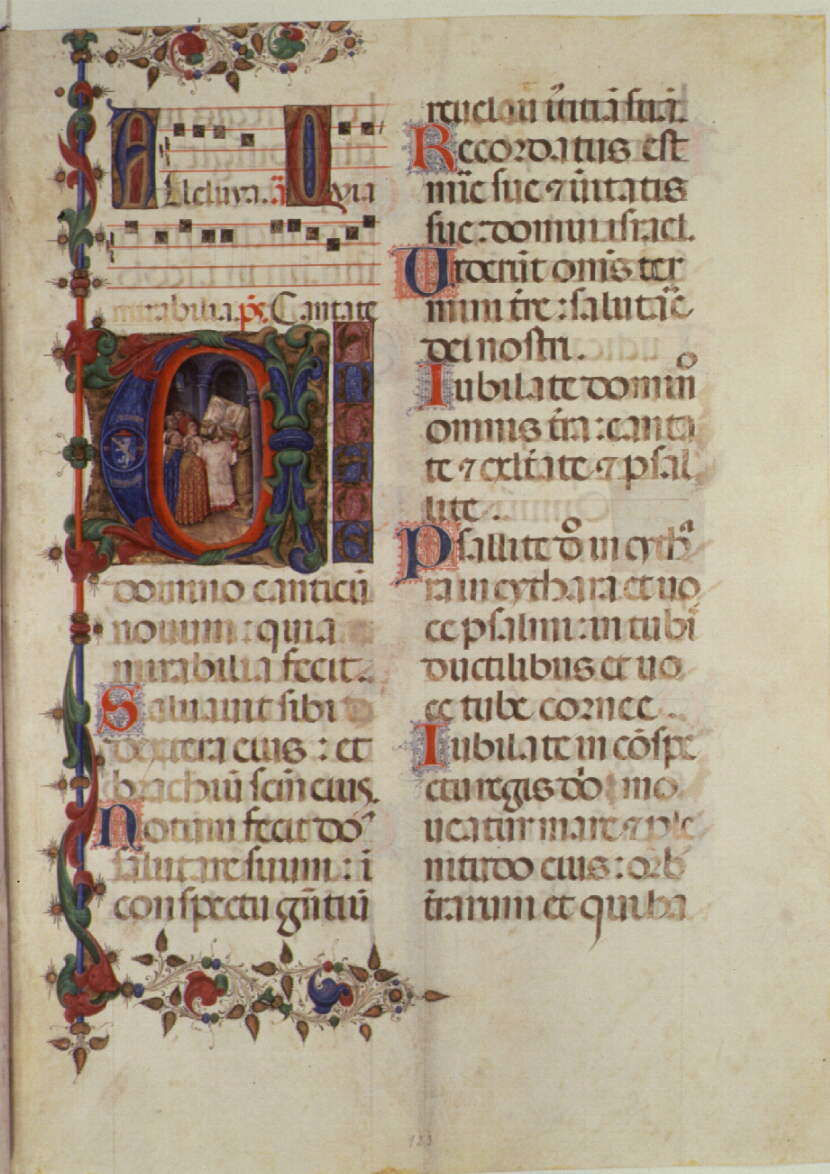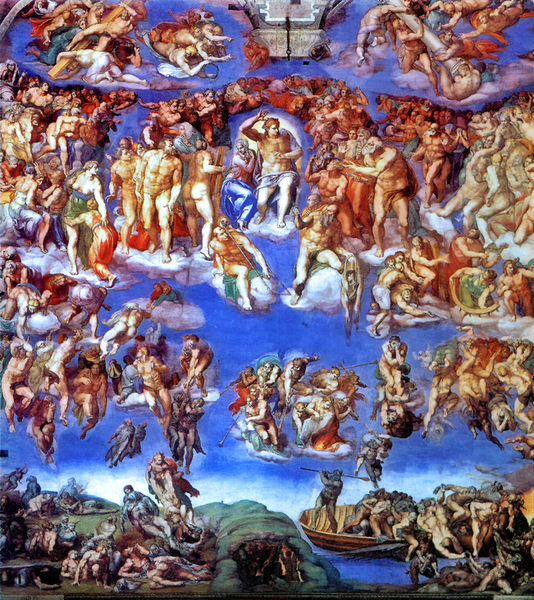Today, the Church presents us with the grand feast of the Visitation of the Blessed Virgin Mary to her kinswoman, St. Elizabeth. While some may choose to focus the liturgy on the idea of loving service (if one were to have read Option II for the first reading), we might tend to miss the significant link between the reading from the Prophet Zephaniah, the Psalm and the Gospel. From Zephaniah, we read:
'
[14] Give praise, O daughter of Sion: shout, O Israel: be glad, and rejoice with all thy heart, O daughter of Jerusalem. [15] The Lord hath taken away thy judgment, he hath turned away thy enemies: the king of Israel the Lord is in the midst of thee, thou shalt fear evil no more.
[16] In that day it shall be said to Jerusalem: Fear not: to Sion: Let not thy hands be weakened. [17] The Lord thy God in the midst of thee is mighty, he will save: he will rejoice over thee with gladness, he will be silent in his love, he will be joyful over thee in praise. [18] The triflers that were departed from the law, I will gather together, because they were of thee: that thou mayest no more suffer reproach for them.Mary makes the trip down to Judah from Nazareth. She follows, in a sense, the trip that the Ark of the Covenant made when it was brought down to Jerusalem from its northern location (at the request of King David). Mary, as the true Ark of the Covenant, is the fulfillment of the prototype of the old Ark. In her womb, she carries the True Bread from heaven, the True Law and the True Priest. As the Daughter Zion, she holds the embodiment of the hopes of Ancient Israel. She bears in her womb, the true source of gladness for the Chosen People: Jesus.
The responsorial psalm, taken from the Prophet Isaiah, further makes this point:
[2] Behold, God is my saviour, I will deal confidently, and will not fear: O because the Lord is my strength, and my praise, and he is become my salvation. [3] You shall draw waters with joy out of the saviour's fountains: [4] And you shall say in that day: Praise ye the Lord, and call upon his name: make his works known among the people: remember that his name is high. [5] Sing ye to the Lord, for he hath done great things: shew this forth in all the earth.
[6] Rejoice, and praise, O thou habitation of Sion: for great is he that is in the midst of thee, the Holy One of Israel.
"Great is he that is in the midst of thee, the Holy One of Israel" was the response. In the womb of Mary, the Lord was, indeed, in the midst of His people. But, even in Isaiah's prophecy foreshadows Mary's Canticle, which is found in today's Gospel:
[39] And Mary rising up in those days, went into the hill country with haste into a city of Juda. [40] And she entered into the house of Zachary, and saluted Elizabeth. [41] And it came to pass, that when Elizabeth heard the salutation of Mary, the infant leaped in her womb. And Elizabeth was filled with the Holy Ghost: [42] And she cried out with a loud voice, and said: Blessed art thou among women, and blessed is the fruit of thy womb. [43] And whence is this to me, that the mother of my Lord should come to me? [44] For behold as soon as the voice of thy salutation sounded in my ears, the infant in my womb leaped for joy. [45] And blessed art thou that hast believed, because those things shall be accomplished that were spoken to thee by the Lord. [46] And Mary said: My soul doth magnify the Lord. [47] And my spirit hath rejoiced in God my Saviour. [48] Because he hath regarded the humility of his handmaid; for behold from henceforth all generations shall call me blessed. [49] Because he that is mighty, hath done great things to me; and holy is his name. [50] And his mercy is from generation unto generations, to them that fear him. [51] He hath shewed might in his arm: he hath scattered the proud in the conceit of their heart. [52] He hath put down the mighty from their seat, and hath exalted the humble. [53] He hath filled the hungry with good things; and the rich he hath sent empty away. [54] He hath received Israel his servant, being mindful of his mercy: [55] As he spoke to our fathers, to Abraham and to his seed for ever. [56] And Mary abode with her about three months; and she returned to her own house.
Those who pray Vespers recite/chant Mary's Canticle, the Magnificat. It is one of the Church's most treasured prayers.
Earlier in the thread, I alluded to the journey of Mary from Nazareth to Judea mirroring that of the Ark of the (Old) Covenant which traveled from the northern part of Israel to Jerusalem. Something interesting happens, which parallels the Davidic episode of the Ark of the Old Covenant. When Elizabeth greets Mary, she asks her "Who am I that the Mother of my Lord should come to me?" She brings to fulfillment what King Davidi said as the Ark was brought to him, "Who am I that the Ark of e the Lord should come unto me?" But, the parallels do not end there. King David leaps and dances before the Ark. In St. Elizabeth's womb, St. John the Baptist leaps with joy as he comes into the presence of the Author of Life who has made His dwelling in the womb of the Blessed Virgin Mary.
Now, I am not, in any way, advocating the so-called trend of "liturgical dance" that has infiltrated our liturgies. King David's dance around the Ark was not associated with any of the cultic sacrificial worship of Ancient Israel. However, that is not to discount the immense joy that David experienced in the Ark's presence. How much, moreso, was the joy that St. John the Baptist experienced when he came into the presence of the Lord, whose full presence was contained in the True Ark.
St. Elizabeth, in her greeting, refers to Mary as "blessed...amongst women." She is calling Mary what she truly is. Recall that when the Archangel St. Gabriel greeted the young virgin, he did not call her "Mary"; he called her "full of grace". That is her true name and her real identity. She is full of grace because God preserved her, from the moment of her conception, from the stain of Original Sin. She became the True Ark of the Everlasting Covenant. Because Mary was full of grace, she could completely and freely give herself to God and accept the plan that He presented to her ("Behold, I am the handmaid of the Lord; be it done unto me according to thy word."). For Mary, it is not enough to be blessed among women; it is what she does with that blessing that is remarkable, for, through this blessing, she is able to bring forth the Savior. She does not keep the blessing to herself; she shares it, first by going to St. Elizabeth's assistance and then, by bringing Christ into the world.
The final statement that St. Elizabeth makes is a rather remarkable one: "blessed is she who believed" that the word spoken to her by God would be fulfilled. Perphaps these words resonated in Mary's heart as she watched her Son hanging from the Cross. Mary's faith actually surpasses that of Abraham. Scripture tells us that God credited Abraham's faith as an act of righteousness. The greatest test of that faith was when the Lord asked Abraham to sacrifice his beloved son, Isaac, the child of the promise, on Mount Moriah. Abraham doeas not know how, but, he believes that God would restore Isaac to him. That is why he rather cryptically states that "we" will return to the base of the mount after offering sacrifice. Abraham freely offers Isaac and God, seeing the patriarch's faith, stops him from sacrificing his son. Mary is called to make that same sacrifice. She walks up Calvary behind Jesus, who carries the wood of the Cross. "Blessed is she who believed" perhaps echoes in her mind and in her heart. She offers her Son completely and unreservedly to the Father, uniting her heart to Jesus' as he suffers and dies. She believes in her heart that the Father will restore her beloved Jesus, the true Child of the promise, to her and, three days later, it comes to pass in the Resurrection. Her complete and unwavering faith surpasses that of Abraham. The type is greater than the fulfillment.
On this feast of the Visitation, let us ask Mary for the grace to believe with unwavering faith that everything that God has promised us will be fulfilled. May she, who is "blessed..amongst women" serve as the model par excellence of holiness, fidelity and total acceptance of God's will. May our souls magnify the Lord and rejoice in God our savior.






